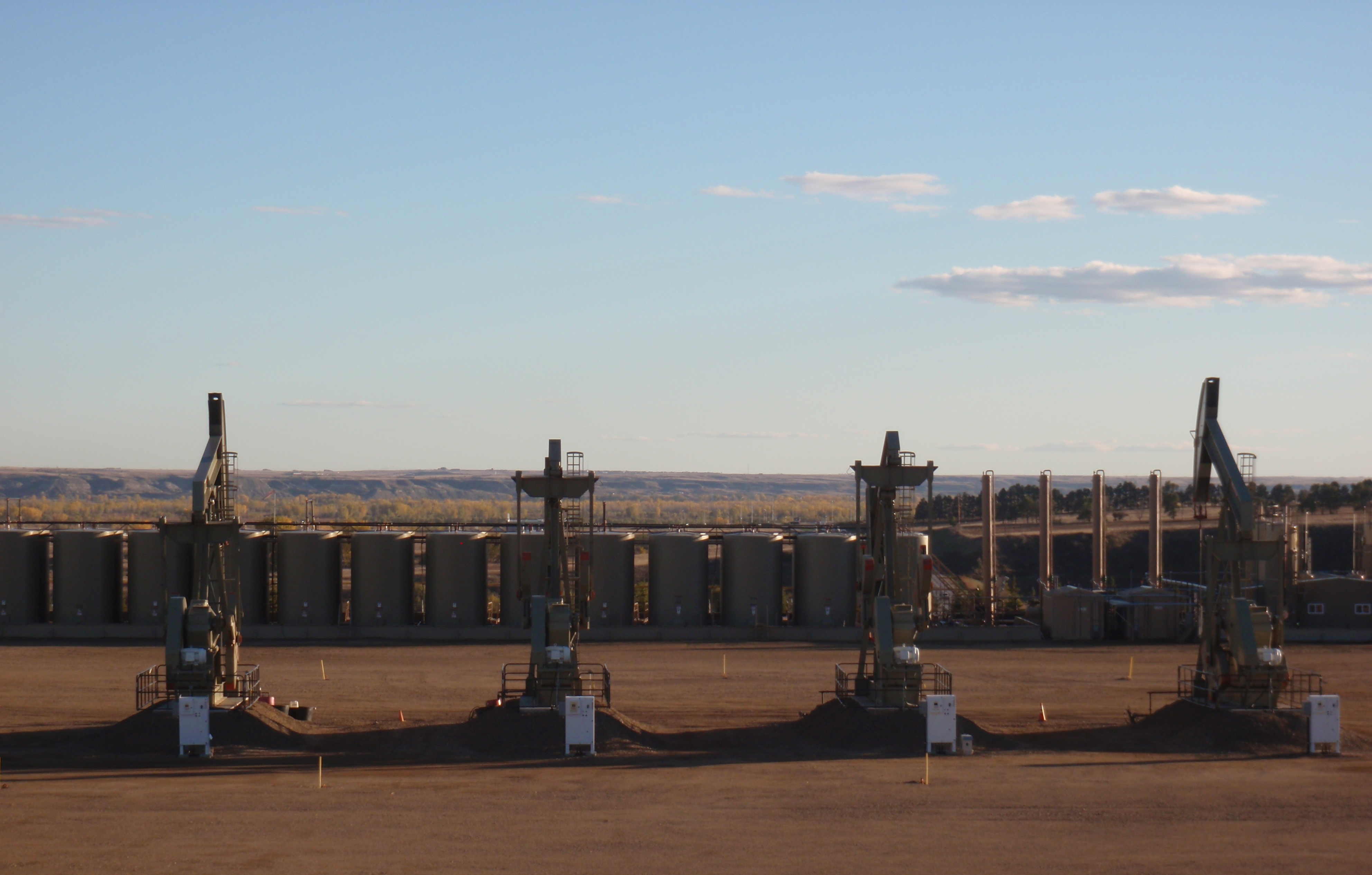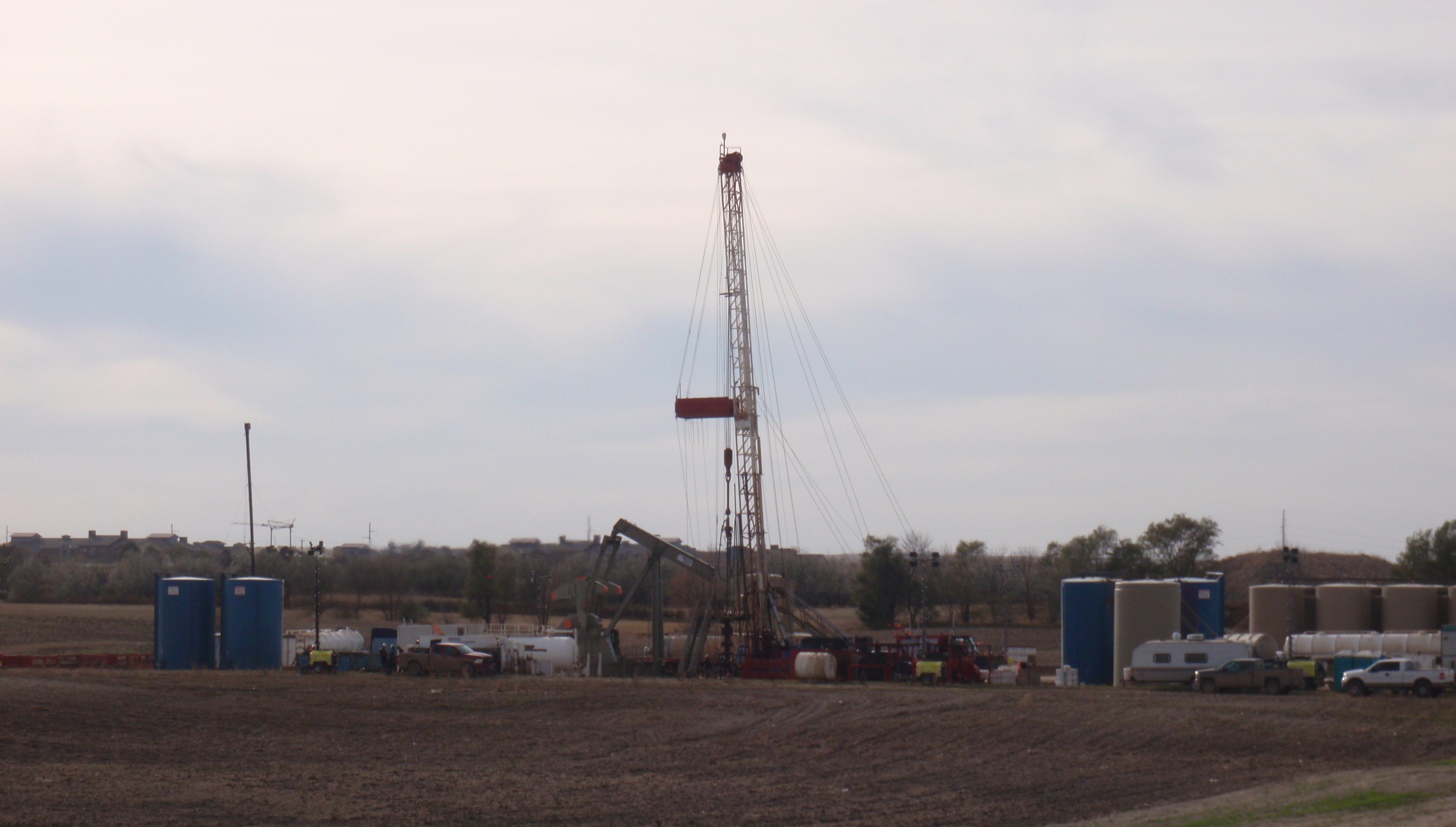
Prof. Mark Perry did a heap of learnin’ on his trip to Williston in May. He wraps up comments at his post, Top ten things I learned on my summer trip to the Bakken oil fields, Part II
My comments on part I here.
If you are looking for a primer on the oil revolution or Bakken or fracking, check out his articles.
A few highlights from his 3,000+ word post and a few of my thoughts.
So let me continue that topic in this post with further discussion of the “marvels of engineering” that have revolutionized America’s energy production.
6. Advanced Technologies.
… As I mentioned in Part I of this series, the general public is probably unaware of the fact that the oil and gas business is a very, very high-tech industry that uses cutting-edge, advanced engineering, geological and drilling technologies that continually advance and improve.
In contrast to the advanced technologies involved in hydraulic fracturing and horizontal drilling, the technologies involved to produce renewable energies like wind and solar power are relatively low-tech and primitive – centuries-old technology in the case of windmills.
Petroleum technology is advancing every day. One of my many concerns about the huge solar plants going into operation, such as Ivanpah, and others in development is that technology from several years ago is locked in place. That $2 billion poured into Ivanpah is a monument to frozen technology that will be locked in place for 30 or 40 years.
Same with wind turbines. With minimal changes other than larger turbines and larger generators to increase conceptual power of a tower, year-old technology is locked into 20 year contracts. Dramatic technological developments are on hold as massive numbers of projects are installed.
7. One Example of Advanced Drilling Technologies – the New “Walkable Drilling Rigs.”
Moving a rig to a new location requires disassembling a huge machine and setting it up again. That time and cost is needed even if only moving a dozen feet.
New rigs can side-step a few feet to another well on the pad without disassembly and reassembly. Newest rigs can walk a mile down the road to a new pad.
I mentioned this back in September 2012.
The Carpe Diem post highlights this video:
[youtube=https://www.youtube.com/watch?feature=player_embedded&v=e5gTw5-KjSk]
… [T]he drilling platform has hydraulic equipment built into the rig that allows the entire 1 million pound, 150 foot high platform to be lifted up off the ground about 12 inches and it then moves itself three feet at a time to the new location.
Check out the economics of a well:
8. Economic Impact of a Shale Oil Well. … What are the production statistics and what is the economic impact of a typical individual oil well in the Bakken? Here are some details via the North Dakota Department of Mineral Resources:
Average cost to drill, frack and complete a Bakken oil well: $9 million
Expected production life of a Bakken oil well: 45 years
Lifetime oil production per well: 615,000 barrels
Expected lifetime revenue generated per well: $46.125 million at $75 per barrel
Total operating expenses per well: $2.3 million
Royalty payments to mineral owners per well over 45 years: $7.3 million
Taxes Paid per well: $4.325 million total ($2.1 million gross production taxes, $1.8 million extraction tax and $425,000 in sales taxes)
Total employee salaries and wages per well: $2.125 million
Average Profits Generated per Bakken well: $20 million net of costs and taxes
I have quoted that in detail in order to create a mini-income statement later.

9. Flights to the Bakken. There are so many people travelling to and from the Bakken oil fields that Delta Airlines now offers four daily nonstop flights between Minneapolis-St. Paul and Williston, ND in each direction. Likewise, United Airlines offers four daily nonstop flights between Williston and Denver in each direction, and one daily nonstop flight between Williston and Houston in each direction!
Keep in mind that Minneapolis is one of the regional hubs for Delta. The article points out the contrast that Delta has 4 daily flights to Willison, population around 30K. Delta has three daily flights to DC, population 6M, and four daily to Boston, population 4.5M. Even allowing for 54 seat regional jets on the Williston run versus 120 or 140 planes on the other routes is amazing.
10. Bakken Mancamps. … And contrary to the general perception some might have, the mancamps in the Williston are very clean, offer high-quality housing for oil workers, and have very strict rules – there are generally zero-tolerance policies for drugs, alcohol, firearms, pets, guests and cohabitation.
Article says Target Logistics has 10 camps in Bakken with over 4,000 beds.
The all-inclusive room rate (including unlimited food) is listed at about $110 per night…
That is a good price for a furnished sleeping space, utilities included, that is cleaned for you, with 4,000 calorie-a-day meals available 24/7.
The article conclude with great quotes on the energy revolution:
…
“Foreign nations lack perhaps the key element behind the US energy revolution: an entrepreneurial culture and ample incentives for the years of trial and error necessary for shale breakthroughs.
…
“For all of the criticism this country has fielded for supposedly losing its edge in innovation, surging American energy production is a reminder of the deep pools of ingenuity, risk taking, and entrepreneurship that remain in the country. While some argue that Western civilization has entered a period of decline [and stagnation], many smaller American towns [like Williston] are experiencing a rebirth, with some young people in the energy business enjoying six-figure salaries, suggesting an underlying resilience in a country still recovering from the deep economic downturn.
“The successes of the architects of the shale era are attributable to creativity, bravado, and a strong desire to get really wealthy. It doesn’t get more American than that.”
Bret Stephens is quoted discussing how this happened in the U.S.:
“[It did not] happen because enlightened mandarins in the federal bureaucracy and national labs were peering around the corners of the future. For the most part, they were obsessing about the possibilities of cellulosic ethanol and other technological nonstarters.
“Instead, fracking happened in the U.S. because Americans, almost uniquely in the world, have property rights to the minerals under their yards. And because the federal government wasn’t really paying attention. And because federalism allows states to do their own thing. And because against-the-grain entrepreneurs like George Mitchell and Harold Hamm couldn’t be made to bow to the consensus of experts. And because our deep capital markets were willing to bet against those experts.”
What have entrepreneurs, working from the private sector, going against accepted wisdom, investing everything they have and are, slaving away for years and years accomplished with their sweat?
- They have unleashed hundreds of millions of barrels of oil that was untouchable 20 years ago.
- They have made themselves and huge numbers of other people incredibly rich
- As a bonus, they have revoked OPEC’s veto power over the global economy.
Astounding.
Those “deep pools of ingenuity, risk taking, and entrepreneurship” still exist and will flourish as long as we, as a society, encourage the same. We, collectively, can instead crush it if we choose. What will be our choice?
Update: analysis of what income statement for one well looks like based on Prof. Perry’s numbers above.